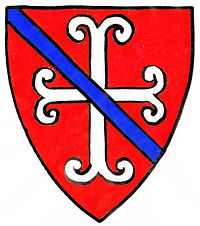
Guy Ferre, known as the younger, was a 14th century Gascon knight and administrator who served as Seneschal of Gascony (1298-99 and 1308-1309).
Ferre was the son of John Ferre and nephew of Guy Ferre the Elder. He was a household knight of Eleanor, Queen consort of England between 1277 and 1290 and household steward between 1288 and 1290. [1] Appointed on 12 March 1308 as Seneschal of Gascony, replacing John de Havering, Ferres served until he was replaced by John de Hastings in 1309. [2] He was married to Eleanor Mountender and died without issue in 1323.